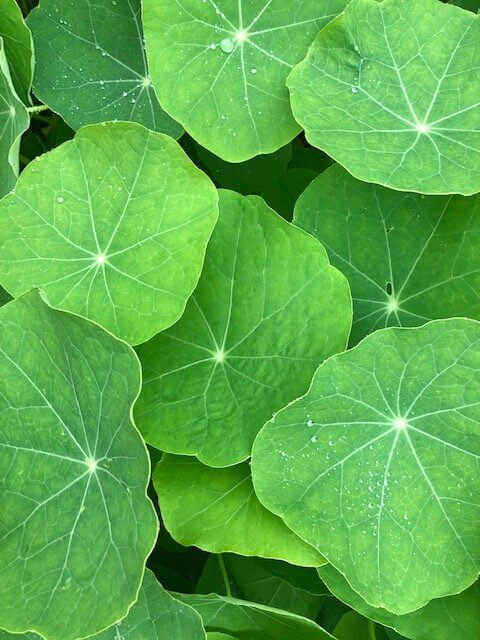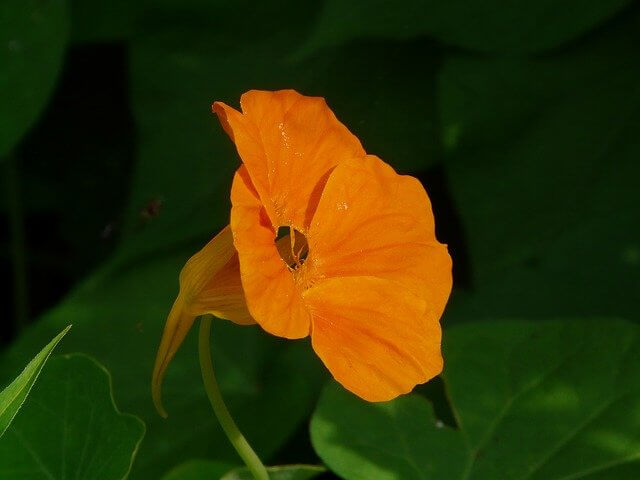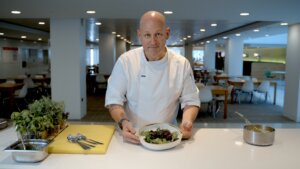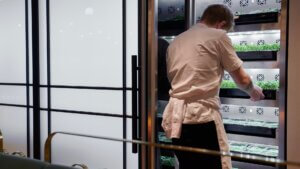A bit of history
Nasturtium (Tropaeolum majus) is a herb originating from South America and grown across the world for its culinary, medical and ornamental uses1 2. Tropaeolum majus is not a naturally occurring plant, and it is thought to have been cultivated in Peru through the breeding of other plants in the Tropaeolum genus 3. Nasturtium seeds were first brought to Europe from Peru in 1684 by Dutch monk Pater Beverning and the plant was first grown in the botanical garden of the University of Leiden. Over the next two decades, cultivation spread across Europe, being recorded in England (1688), Germany (1690) and France (1700). Because of its high vitamin C content, it was distributed to harbours and oceanic islands to fight scurvy amongst sailors on long sea voyages and it soon came to be used as a medicinal herb for treating skin conditions 4 and as a herb for cooking.
Twisted Nose or Monk’s Hood?
A curious and confusing fact is that the plant we call Nasturtium in English has the botanical name Tropaeolum majus but the plant with the botanical name Nasturtium officinale is actually called Watercress in English. Nasturtium officinale is part of the Brassicaceae family and isn’t closely related to the herb Nasturtium at all! The two plants do both have a hot and peppery flavour and this is probably the cause of the confusion. The name Nasturtium derives from the Latin nasus tortus, meaning ‘twisted nose’. In other European languages, the common name has a completely different root. Nasturtium is referred to as Capuchon (French) Capuchina (Spanish) and Kapuziner (German) which is a reference to the cone-shaped hood with a long tail worn by Capuchin Franciscan Friars and which has a similar shape to the flowers of Nasturtium.
Futuristic properties
One extraordinary property of the Nasturtium leaf can be found on its surface: superhydrophobicity. This feature allows droplets of water that fall on the leaf to retain their spherical shape and glide straight off the leaf with minimal friction. But how is this achieved? To the touch, the Nasturtium leaf feels exceptionally smooth. However, when examined at an atomic level, a severely rough and bumpy landscape emerges.
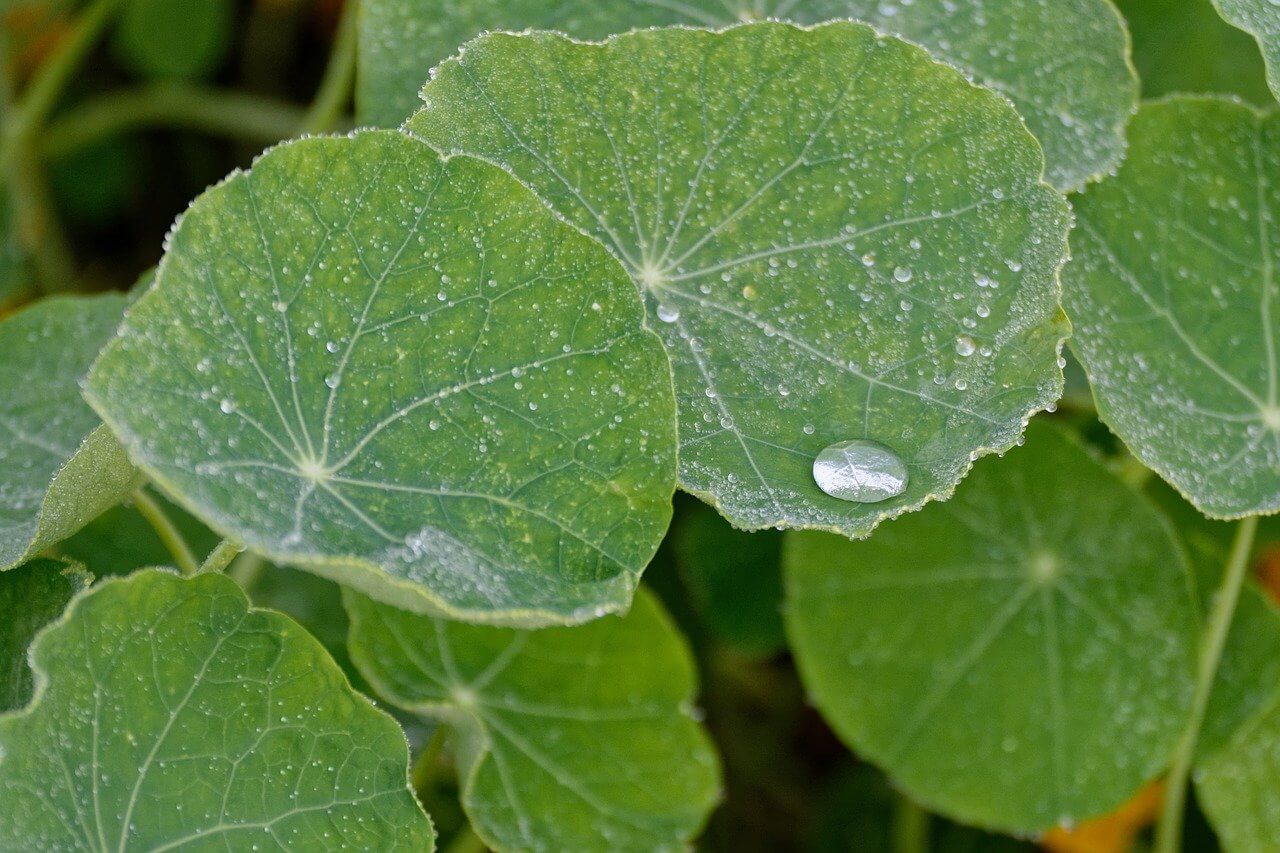
This “micro-roughness” is generated by minuscule tubes, called nanotubules, made of wax. The waxy nanotubules are embedded on the leaf surface with different lengths and orientations, creating a micro-rough surface that strongly repels water 5 – a superhydrophobic surface. Materials scientists are now working to replicate the surface of Nasturtium leaves to generate superhydrophobic synthetic materials, with potential applications including windows, car windscreens and non-wettable textiles 6. Who knows – one day you could be wearing a fabric inspired by Nasturtium!
Not just a pretty plant
The Nasturtium has also shown to have fantastic nutritional benefits. The leaf is packed with pigments, such a lutein and carotenes, which allow it to absorb light for photosynthesis. When consumed however these pigments have been shown to help reduce sight loss in the elderly 7. In addition to the protective effects of Nasturtium leaf compounds on sight, the glucosinolates responsible for its distinctive flavour also have anti-cancer properties. The predominant glucosinolate in Nasturtium is called glucotropaeolin and is found in high concentrations both on and inside the leaf.8 9 When eaten, glucotropaeolin is converted into the anti-cancer compound benzyl isothiocyante, which helps prevent tumours from forming by limiting their capacity to grow10. This is a fantastic property of the herb; however, it does come with a catch – glucotropaeolin can rapidly degrade when the plant is damaged, through processes such as harvest and drying. As such, for maximum health benefit Nasturtium leaf requires the freshest harvesting possible – which you can achieve with an Evogro Plant Growing Cabinet!
Chefs love Nasturtium
Nasturtium leaf has emerged as a firm favourite among Evogro’s professional chef and bartender customers and below we’ve highlighted a few of the dishes and drinks that have been created with Evogro-grown Nasturtium leaf.
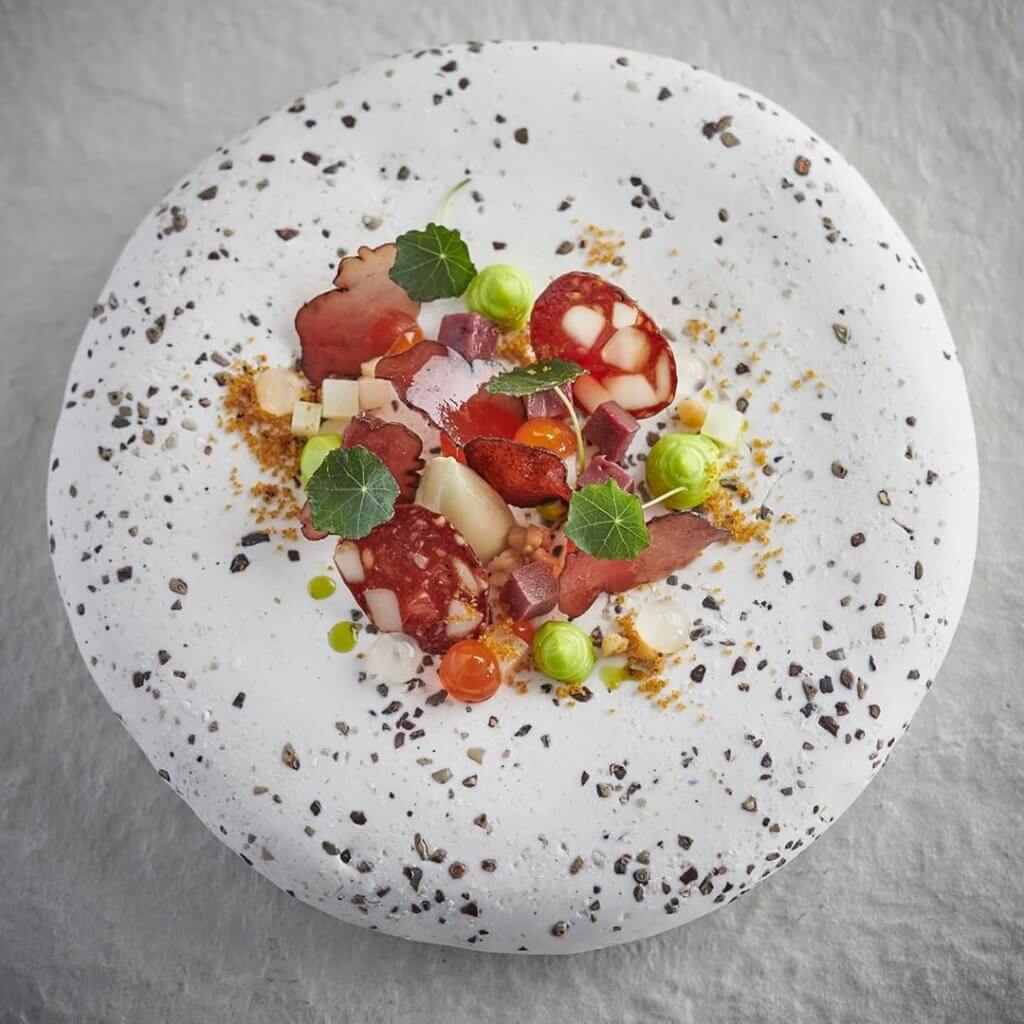
Michael Wignall, The Angel at Hetton
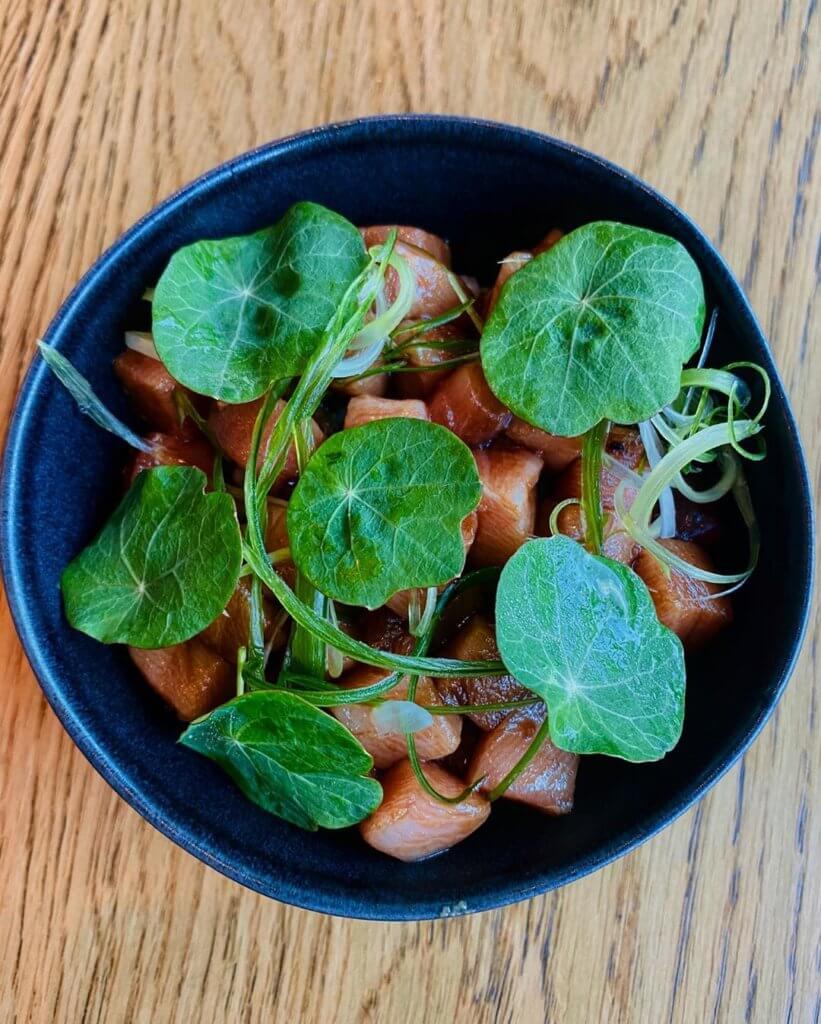
Ollie Dabbous, Hide.
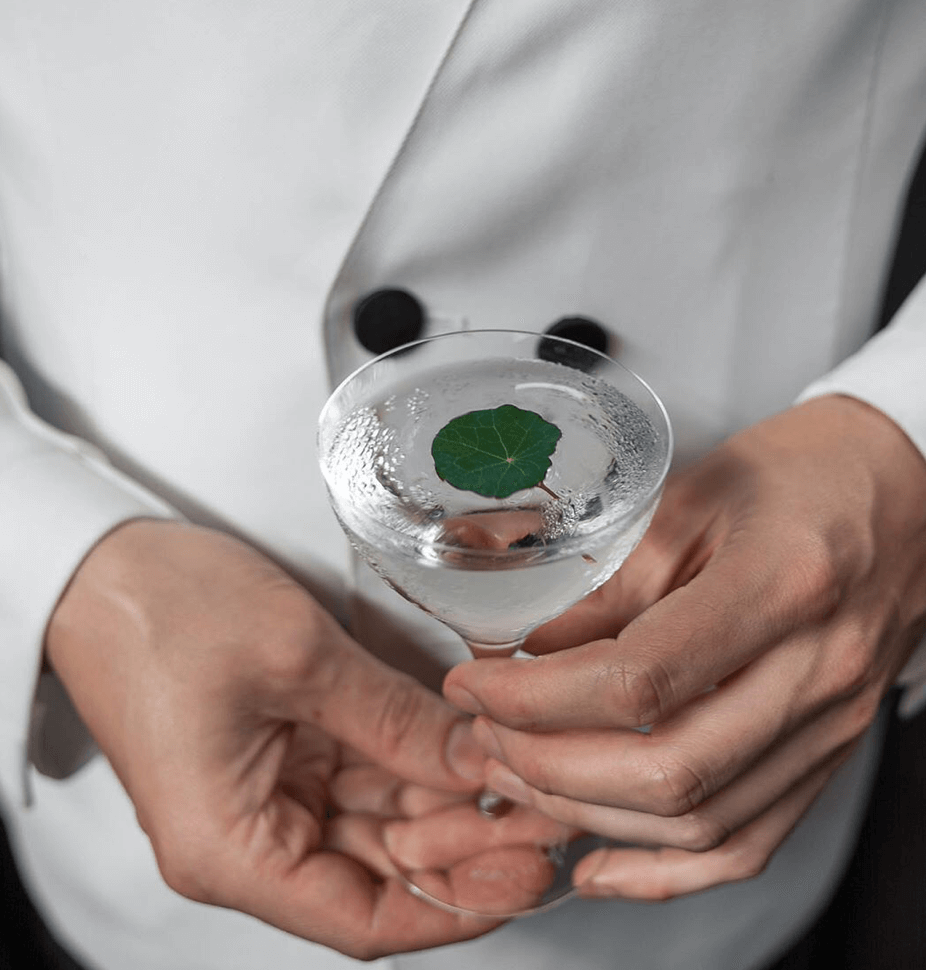
Erik Lorincz, Kwant.
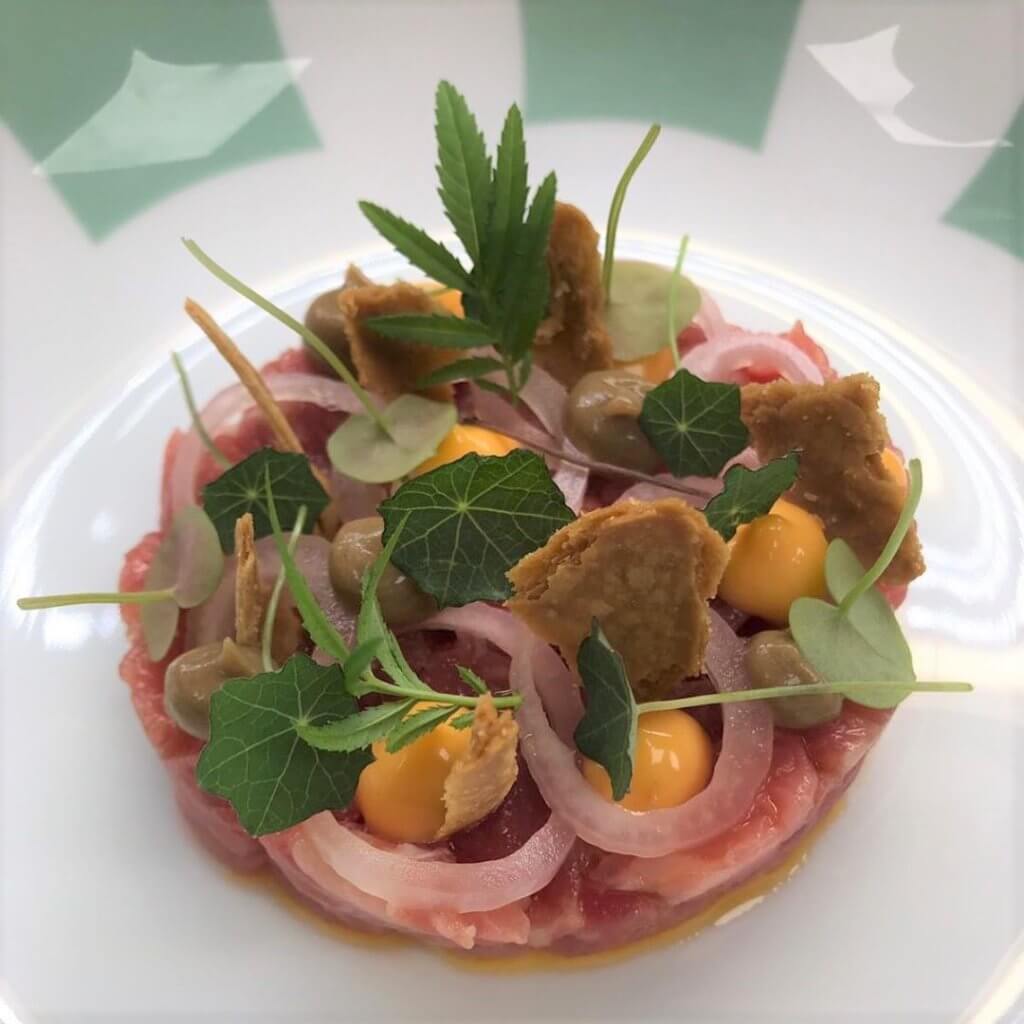
Martyn Nail, Claridge’s.
Credits: Banner photo and Nasturtium flower photo by PXfuel
Sources
- Brondani, J. C. et al. Traditional usages, botany, phytochemistry, biological activity and toxicology of Tropaeolum majus L. – A review. Bol. Latinoam. y del Caribe Plantas Med. y Aromat. (2016).
- Garzón, G. A. & Wrolstad, R. E. Major anthocyanins and antioxidant activity of Nasturtium flowers (Tropaeolum majus). Food Chem. (2009). doi:10.1016/j.foodchem.2008.09.013
- Christenhusz, M. J. M. 746. TROPAEOLUM MAJUS. Curtis’s Bot. Mag. (2012). https://onlinelibrary.wiley.com/doi/full/10.1111/curt.12002
- Bazylko, A., Parzonko, A., Jez, W., Osińska, E. & Kiss, A. K. Inhibition of ROS production, photoprotection, and total phenolic, flavonoids and ascorbic acid content of fresh herb juice and extracts from the leaves and flowers of Tropaeolum majus. Ind. Crops Prod. (2014). doi:10.1016/j.indcrop.2014.01.056
- Otten, A. & Herminghaus, S. How Plants Keep Dry: A Physicist’s Point of View. Langmuir (2004). doi:10.1021/la034961d
- Sharma, C. S., Abhishek, K., Katepalli, H. & Sharma, A. Biomimicked superhydrophobic polymeric and carbon surfaces. Ind. Eng. Chem. Res. (2011). doi:10.1021/ie200369r
- Niizu, P. Y. & Rodriguez-Amaya, D. B. Flowers and leaves of Tropaeolum majus L. as rich sources of lutein. J. Food Sci. (2005). doi:10.1111/j.1365-2621.2005.tb08336.x://onlinelibrary.wiley.com
- Griffiths, D. W. et al. Identification of glucosinolates on the leaf surface of plants from the Cruciferae and other closely related species. Phytochemistry (2001). doi:10.1016/S0031-9422(01)00138-8
- Kleinwächter, M., Schnug, E. & Selmar, D. The glucosinolate-myrosinase system in nasturtium (Tropaeolum majus L.): Variability of biochemical parameters and screening for clones feasible for pharmaceutical utilization. J. Agric. Food Chem. (2008). doi:10.1021/jf802053n
- Platz, S. et al. Bioavailability and metabolism of benzyl glucosinolate in humans consuming Indian cress (Tropaeolum majus L.). Mol. Nutr. Food Res. (2016). doi:10.1002/mnfr.201500633

